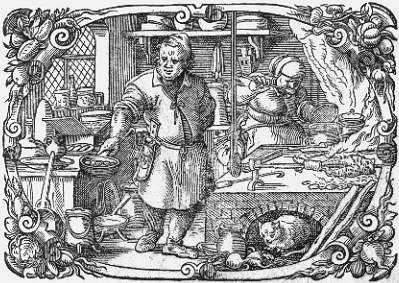Diet: food as medicine
This recipe illustrates the close connection Renaissance writers saw between diet and health:
A capon helpeth appetite, openeth the breast, cleaneth the voice, fatteneth lean men, nourisheth all men, restoreth sick men, hurteth none but the idle, tasteth pleasantly, digesteth easily.
Concerning the preparation of them, I commend them roasted for moist stomachs*; but being boiled with sweet marrow in white broth, they are of speedier, though not of stronger, nourishment.
(From Health's Improvement [1655] by Thomas Muffett.)
- Capon
- A capon is a castrated fowl, raised specifically for eating.
One notable difference between the diet of those in Shakespeare's day and today is the large amount of sugar they used--especially the nobility--in their cooking. Sugar had recently become much cheaper because cane sugar was for the first time imported from such tropical places as the Canary Islands.
Some examples of sugar in cookery. (Explore some of the links on this page.)
Footnotes
-
Dry food?
A person with a phlegmatic or sanguine temperament would have excess of moisture in the body; accordingly the drier method of cookery is recommended.
